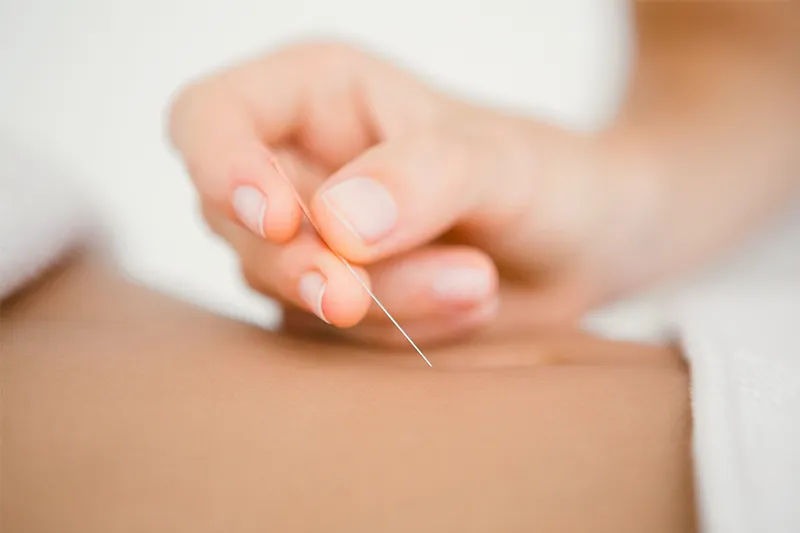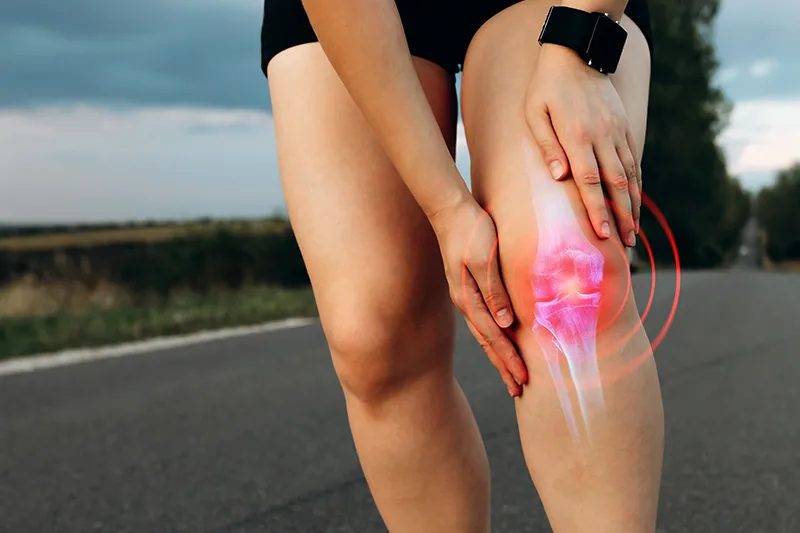Why Female Athletes are More Prone to ACL Injuries and What They Can do About It
As a woman, your body is very different from a man’s. This has its advantages as well as disadvantages, especially when it comes to injury. Keep reading to learn why females are more prone to ACL injuries and how you can prevent them. ACL injuries are common when it comes to playing sports. Athletes in sports like basketball, football, or soccer are at risk for this type of injury. But did you know your chances of an ACL injury are also higher if you’re a female? At Prairie Garden Medical, our team offers comprehensive care for sports injuries like ACL tears. Leading our team is Dr. Joel Tupper, specializing in primary care and orthopedic surgery, offering you excellent treatment. The facts on ACL injuries Your anterior cruciate ligament, or ACL, is one of the main stabilizing ligaments in your knee joint. Along with your posterior cruciate ligament, medial collateral ligament, and lateral collateral ligament, your ACL keeps your knee joint from slipping out or moving incorrectly. An ACL injury happens when the ligament stretches beyond its capacity or tears from trauma to the knee. This often happens in sports requiring you to pivot or make quick turns, putting too much pressure on the joint if you’re not careful, and resulting in an ACL tear. There are different grades of ACL injuries, ranging from mild to severe. Mild injuries often involve stretching of the ligament, while severe injuries cause the ACL to tear completely. There are several symptoms related to this injury, including: Pain in the joint Swelling Instability of your knee A popping sensation or sound Decreased range of motion If you’re playing sports and experience any of these symptoms, it’s best to sit out and seek immediate medical care. And did you know that your chances of having an ACL injury increase just because you’re a girl? Females and ACL injuries — What’s the link? Female and male bodies differ when it comes to physical aspects. There’s the obvious difference in sex characteristics and facial hair, which is why women are more susceptible to ACL tears. There are several reasons why this is true, mainly because of physical differences. The disadvantages that make women more prone to ACL injuries are: Hormones Women don’t have as much testosterone as men, the hormone essential for muscle strength and density. Estrogen also plays a role in the risk of an ACL tear as it fluctuates throughout your monthly cycle. High estrogen contributes to your ligaments and tendons becoming loose, which is a huge factor in ACL injuries. Physical differences Men and women are built differently, and women have much less muscle mass than men. This puts women at risk for injury, especially around the knee joint. There isn’t as much muscle around the female knee, which helps your ACL stabilize the joint. Biomechanics Women tend to jump, pivot, and land differently than men. Combined with other factors, this puts excess pressure on your tendons and ligaments, especially your ACL. Prevention strategies for [...]
Shoulder Dislocation: How it Happens and What to Do if it Happens to You
Dislocated shoulders are extremely common, but they can be recurrent if you aren’t proactive at preventing and treating them. We explain how shoulder dislocation happens and how they’re treated. Your shoulder is the joint in your body that has the highest likelihood of dislocation. This is due to the fact that your shoulder is highly mobile and has a ball-in-socket mechanism which actually makes it unstable. Because shoulder dislocation is so common, our team of orthopedic surgeons at Prairie Garden Medical in Oklahoma City, Oklahoma, wants you to know how shoulder dislocation can happen and what to do should it happen to you. What happens when you dislocate your shoulder? Your shoulder becomes dislocated when the round, upper part of your arm bone – the humerus – comes out of your shoulder blade, or scapula. It’s common for the ligaments, tendons, and muscles that surround your shoulder to be damaged as well. Shoulder dislocations are typically caused by a fall or blow to the shoulder which can happen most often during any kind of sports activities. Because of this, kids and young teens are particularly susceptible to this type of injury. When you dislocate your shoulder, you can experience some of the following symptoms: Muscle spasms Intense pain Swelling and bruising Joint immobility Numbness and weakness Your shoulder will also be visibly out of place if it’s dislocated and could be in almost any direction: forwards, backward, and downwards. Treatment for shoulder dislocation If you think that you’ve dislocated your shoulder, it’s important to seek medical treatment right away. Your provider will put your shoulder back into place and then have you start the rehabilitation process. After popping your shoulder back into place, you’ll need to wear a sling for a few weeks in order to immobilize your shoulder while it heals. Icing your shoulder 3-4 times a day will help your shoulder to heal quicker and more effectively. When the initial recovery process is over, it’s important to attend physical therapy in order to strengthen your shoulder and restore and improve mobility. When you dislocate your shoulder, it greatly increases your risk of dislocating it again. So it’s important to follow protocol while your shoulder heals in order to help mitigate that risk. Next steps If you need treatment for a dislocated shoulder or physical therapy to help strengthen your shoulder to prevent any future dislocations, our team at Prairie Garden Medical located in Oklahoma City, Oklahoma, is ready and willing to help. To set up an appointment with us, contact our office or use our online scheduler tool today.
Signs Your Chronic Hip Pain Could be Hip Impingement
If you suffer recurrent hip pain, it’s possible that the ball and socket joint that make up your hip aren’t operating properly, which causes a condition known as hip impingement. Read on to learn more about the signs of hip impingement and how it’s treated Hip impingement – or femoroacetabular impingement – is a condition that happens when the ball of your hip pinches the socket. This condition affects about 10-15% of adults and is one of the earliest signs of osteoarthritis. Signs of hip impingement include pain and stiffness and can often mirror symptoms of chronic hip pain. Because of that, our orthopedic specialist Joel S. Tupper, MD, and our team at Prairie Garden Medical in Oklahoma City, Oklahoma, want to let you know about the signs of hip impingement in case it’s what’s actually causing your chronic hip pain. Explaining hip impingement Although the exact cause of hip impingement is unknown, there are a few things that typically cause it to happen. The first is when the ball of your hip is more of an oval shape than a circle which creates a lot of friction in your hip joint. The second happens when your hip socket is abnormally shaped. Either way, it can cause pinching and pain in your hip. While many people have this abnormal hip shaping at birth, you can also develop hip impingement over time, especially if you’re involved in sports or other activities that involve lots of twisting and squatting. How to spot hip impingement Hip impingement may not have any symptoms for many years, and this condition can often be mistaken for chronic hip pain. However, these are some of the symptoms to be on the lookout for in order to receive a hip impingement diagnosis: Pain in your hip and groin Decreased range of motion Clicking or locking of the hip joint You may also find that the hip and groin pain grows worse with long periods of sitting or physical activity. Diagnosing and treating hip impingement Hip impingement is diagnosed after reviewing your symptoms, performing a physical exam, and taking X-ray images. If your hip impingement is minor, it can be treated with conservative methods like rest, modifying your activity levels, over-the-counter pain medications, and physical therapy. However, if these don’t seem to be helpful after a period of time, you may have to consider surgery. Surgical options can correct any abnormalities in the joint as well as give the surgeon the opportunity to remove damaged and inflamed tissue that may be contributing to your pain. To learn more about hip impingement or to see if it’s what’s causing your chronic hip pain, contact our team at Prairie Garden Medical located in Oklahoma City, Oklahoma, by contacting us or use our online scheduler to request an appointment with us today.
5 Tips for Strengthening Your Ankle After a Sprain
Ankle sprains are common, but they still need a good recovery routine in order to ensure you won’t sprain it again in the future. Here’s how to care for your ankle sprain and regain your strength in your ankle joint. Ankle sprains can happen to anyone, whether you’re a serious athlete or a walking enthusiast. When you sprain your ankle, the ligaments that support your ankle joint are stretched beyond their limits and can cause pain and swelling. After an ankle sprain, it’s important to stay off it for the first three days. You can also treat it with ice and over the counter pain medications to help with the pain and swelling. However, after those first few days are over, at-home exercises and physical therapy are going to be the key to strengthening your ankle to prevent future sprains. Our expert team at Prairie Garden Medical in Oklahoma City, Oklahoma, offer five tips to help you get strength back in your ankle. 1. Brace yourself Depending on the severity of your sprain, your provider will most likely prescribe an ankle brace for you to wear in order to provide stability to your ankle while it heals. By making sure that your ankle joint is stable, you’ll mitigate your risk of re-spraining it while your ankle is trying to heal and regain its strength. Stretch it out We provide you with some stretching exercises to do that will keep your Achilles tendon from constricting. A tight Achilles tendon can interfere with the strength of your ankle, so it’s important to do all the recommended stretches. Exercises for your Achilles tendon include calf stretches with a towel, standing heel raises, and ankle pumps. Find your balance When you sprain your ankle, nerve fibers are damaged and your brain needs to work out where your ankle is and how to move it. Exercises for balance will include standing on your injured ankle for 30 seconds at a time and then slowly working up to 60 seconds. You can try leaning against a door frame to start; when you feel ready, you can do it with your eyes closed to really work on your balance. Add flexibility and range of motion Doing certain exercises to encourage range of motion about 5 times a day will help you to regain flexibility in your ankle. A couple of tried-and-true exercises are the “ankle alphabet” and knee motion. The ankle alphabet involves pointing out your big toe and writing out the alphabet in the air with your foot. This will get your ankle moving in all directions and you can repeat it 2-3 times as long as you don’t have pain while doing it. For the knee motion exercise, you’ll sit in a chair with your foot flat on the floor. Gently move your knee back and forth to get the ligaments in your ankle moving. Get your strength back Once you feel like you’ve regained some balance and range of motion in your ankle, you [...]
When is Dry Needling a Good Option for Treatment?
Dry needling is becoming more and more popular, but you might be wondering what it is and how it works. Read on to learn more about this procedure and how it may benefit you. Dry needling is growing in popularity, and if you’ve heard about this new and advanced treatment, you might be wondering what it can be used for. Dry needling is a treatment procedure that physical therapists use to treat pain and muscle movement issues associated with myofascial trigger points. One or more thin, monofilament needles are inserted into or near your trigger points in order to get your muscles to contract. This can help to relieve pain and improve range of motion. Joel S. Tupper, MD, and the rest of our team at Prairie Garden Medical in Oklahoma City, Oklahoma, understand that dealing with pain of any kind can be frustrating and even debilitating. Here’s a closer look at how dry needling works and what you can use it for. Explaining dry needling When your muscles are overused, they go into crisis and they don’t get the regular blood supply and oxygen that they need to go back to their resting state. The tissue around your trigger points then becomes acidic, which sensitizes your nerves and makes the surrounding area sore and painful. Dry needling uses thin needles to stimulate your trigger points and draw blood flow back to the area to release tension. The inserted needles can also cause your body to release endorphins which jumpstarts your natural healing process. Once your provider finds the right trigger point for your pain, they will try to move the needle around to get a twitch response from your muscle, which means the process is working. What can dry needling be used for? Dry needling can help with joint issues, disk issues, muscle pain, tendinitis, and any other health issues that require physical therapy. It can help with healing and recovery by triggering your body’s natural healing process and improving range of motion. Maybe you’re recovering from an ACL, meniscus, or rotator cuff tear. Dry needling can help relieve any muscle stiffness and help jump start the healing process while also helping to mitigate pain as you recover. Dry needling can also help with pain as you do physical therapy to recover from procedures like knee or hip replacement surgery. Next steps If you’ve recently experienced a sports injury or are struggling with muscle pain and need physical therapy, dry needling could be an integral part of your health care plan. To learn more about this treatment procedure or to schedule a consultation, contact our office located in Oklahoma City, Oklahoma, or use our online booking tool today.
4 Benefits of Aquatic Therapy
Physical therapy and the road to recovery may seem long and difficult, but aquatic therapy can offer many things that typical physical therapy can’t. Find out the benefits of aquatic therapy here. Aquatic therapy, also called pool therapy, is an exercise program or form of physical therapy that’s performed in the water. This type of therapy can assist with rehabilitation and recovery from injuries or surgeries, and the end goal is for you to have relaxed muscles, reduced pain, and improved range of motion. Joel S. Tupper, MD and the rest of our team at Prairie Garden Medical want you to understand all the benefits that can be had from choosing aquatic therapy as part of your physical therapy regime. We list four of those benefits here. 1. It’s easy on your joints A big benefit that aquatic therapy has to offer is the buoyancy of the water. While you’re submerged in the water, the water can hold you up which decreases the amount of strain put on your joints. Because of this, it makes it much easier to perform physical therapy exercises that may otherwise be difficult for you to do. 2. It reduces pain The warm water provided in aquatic therapy can relieve a lot of pain that you might be experiencing. This is because the warmth of the water can relax muscles that are tight or prone to spasms. In addition, your blood flow to injured areas is increased, which also helps reduce pain. 3. It’s a good source of resistance Something that aquatic therapy offers that physical therapy on land can’t is resistance without the use of weights. The natural viscosity of the water provides that resistance in order to strengthen your muscle groups in different ways. These physical therapy exercises might feel much easier to do than it does when you’re out of the water. 4. It’s an enjoyable experience You might find that other physical therapy exercises are difficult to do and aren’t that enjoyable, maybe even feeling mundane. Aquatic therapy can provide a different and engaging environment that can switch up your regular physical therapy routine. This, in turn, can make it a little more fun for you. The bottom line Aquatic therapy can be beneficial for anyone who has recently suffered an injury or has undergone a surgery and needs physical therapy. If you’re interested in adding aquatic therapy into your physical therapy routine, contact our team at Prairie Garden Medical located in Oklahoma City, Oklahoma, to get more information. You can do this by contacting us or by using our online scheduler today.
The Importance of Keeping Your Pelvic Floor Strong
Did you know that pelvic floor dysfunction can affect your body in a lot of ways? In this blog, we discuss the function of your pelvic floor and why it’s so important to keep it strong. Your pelvic floor muscles do a lot for you, whether you realize it or not. This group of muscles is involved in multiple aspects of your bodily functions surrounding your lower abdomen from sexual activity to digestion. If your pelvic floor becomes weak in any capacity, it can lead to many different health issues like incontinence or poor sexual function. At Prairie Garden Medical, Joel S. Tupper, MD and the rest of our team want you to understand why having a strong pelvic floor is so important while also listing some different ways to strengthen it. Understanding the pelvic floor Your pelvic floor muscles are located between your tailbone and your pubic bone within your pelvis. They support internal organs such as your bladder and your colon (and your uterus and vagina if you’re a woman). If you don’t have a strong pelvic floor, it can lead to some of the following symptoms: Difficulty urinating or passing bowel movements Frequently needing to use the bathroom Chronic constipation Lower back pain Pelvis muscle spasms Recurrent urinary tract infections Having a weak pelvic floor can also cause men to develop erectile dysfunction and women to lose sensation in the vagina. While there are some ways to prevent losing strength in your pelvic floor, the following things can affect how strong or weak those muscles are: Pelvic surgery Obesity Pregnancy and childbirth Nerve damage Genetics can also play a large role in the strength of your pelvic floor. It’s possible that some people are born with weaker muscles and connective tissues. How to strengthen your pelvic floor There are many ways to treat any pelvic floor dysfunction, but one of the most important things you can do on your own is pelvic floor exercises. Some good ones to start with are called Kegel exercises, which are simple clench-and-release exercises. You can start by tensing your pelvic floor muscles for three second increments and relaxing them for three seconds. Try doing this 10 times. After you’ve gotten used to the exercises, you can work up to 10-second increments for 10 repetitions. It may take a few months for you to notice the effects of Kegel exercises. However, if after some time has passed, you don’t notice a difference, you may need to contact our team about doing some physical therapy. Other treatments for pelvic floor dysfunction include muscle relaxants, behavior changes like not straining when using the bathroom, and lifestyle changes like taking warm baths and doing yoga. Next steps If you’re struggling with symptoms of pelvic floor dysfunction, don’t wait to see us about getting your pelvic floor strength back. To schedule an appointment with our team, you can contact our office located in Oklahoma City, Oklahoma, or use our online booking tool today.
Does an ACL Tear Require Surgery?
If you’ve torn your ACL, does that mean surgery is automatically the best treatment? We answer that question and more here. Tearing your anterior cruciate ligament (ACL) is one of the most common ways you can injure your knee, with 100,000-200,000 people injuring their ACL each year in the United States. Your ACL is one of the bands of tissue that keep your knee stable and keep your knee bone in place. If you do tear your ACL, you might be wondering what your treatment options are and if it will involve surgery. At Prairie Garden Medical located in Oklahoma City, Oklahoma, Joel S. Tupper, MD and the rest of our team want you to know what all the options are for treatment and what to expect from surgery should it come to that. Explaining ACL tears Your knee is a large and complex joint that is the intersection for your shinbone, thighbone, and knee cap. All of these are held together by a series of ligaments, one of them being your ACL. Your ACL runs through the center of your knee and keeps your knee from over-rotating. ACL tears happen when you overstretch the ligament, causing it to tear partially or completely. This happens most often when you’re playing a sport where you have to move quickly in one direction and then suddenly change directions, such as football, basketball, or soccer. When you tear your ACL, you often hear and feel a pop. Your knee then swells, feels unstable, and becomes difficult to apply pressure to. Other symptoms of ACL tears include pain when walking, decreased range of motion, and knee tenderness. How ACL tears are diagnosed If you’ve injured your knee and suspect an ACL tear, our team can take a look at it and determine if your ACL is actually torn. We begin by performing a physical exam and reviewing all your symptoms. If necessary, we can request imaging tests like X-rays be done in order to get a thorough picture of the condition of your knee. Treating ACL tears If our team determines that you do, in fact, have a torn ACL, we will come up with a treatment plan that best suits you and your health needs. Treatment will depend mostly on the kind of lifestyle you lead. If you lead a more sedentary lifestyle, we do not recommend surgery for you. What we can do for you instead is have you go through physical therapy and wear a brace to stabilize your knee while it heals. However, if you’re more active, we suggest going through surgery so we can repair the ligament. We use minimally invasive arthroscopic surgery in order to reduce recovery time and to limit any damage. If you’ve recently injured your knee and suspect that you tore your ACL, come see our expert team for proper diagnosis and treatment. To schedule an appointment with our highly skilled team, you can contact us at our office or use our online booking tool [...]
How Pelvic Floor Rehabilitation Can Restore Your Quality of Life
Having a weak pelvic floor can negatively impact your health in many ways. We go over how rehabilitating and strengthening your pelvic floor can restore your quality of life here. Pelvic floor rehabilitation is a way to strengthen your pelvic floor, and it’s especially beneficial if you struggle with pelvic floor dysfunction. Pelvic floor rehabilitation – or pelvic floor therapy – involves a series of physical exercises of both strengthening and relaxing your pelvic floor muscles. This helps to improve your stability, sexual function, and control over your bladder and bowels. The goal of pelvic floor rehabilitation is to increase your ability to control your pelvic floor muscles, improve your awareness of contracting and relaxing your pelvic floor muscles, and decrease any pain you’re experiencing with pelvic floor dysfunction. Pelvic floor rehabilitation is typically the first line of treatment recommended to treat pelvic floor dysfunction and all the symptoms that come with it. That’s why at Prairie Garden Medical located in Oklahoma City, Oklahoma, Joel S. Tupper, MD, and the rest of our team want you to know more about the pelvic floor and just how pelvic floor rehabilitation can restore your quality of life. Explaining the pelvic floor Your pelvic floor muscles are located within your pelvis between your tailbone and pubic bone. They support your internal organs such as your colon and your bladder, not to mention your uterus and vagina if you’re a female. When you have a weak pelvic floor, it can lead to the following symptoms: Pelvic muscle spasms Difficulty urinating or passing bowel movements Chronic constipation Frequent urinary tract infections Constantly needing to use the bathroom Lower back pain Not having a strong pelvic floor can also cause women to lose sensation in their vagina or men to experience erectile dysfunction. While there are things that you can do on your own to prevent losing strength in your pelvic floor, there could be outside things affecting your ability to strengthen it, such as: Pelvic surgery Obesity Pregnancy and childbirth Nerve damage Genetics can also be at play since some people are born with naturally weaker pelvic muscles and connective tissues. How pelvic floor rehabilitation works Since having a weak pelvic floor can so adversely affect your quality of life, going through pelvic floor rehabilitation is a great step to take in order to restore it. Some things you can do on your own to strengthen your pelvic floor include doing Kegel exercises – simply contracting and releasing your pelvic muscles for set time increments – not straining when using the bathroom, doing yoga, and taking warm baths. If these aren’t effective, the next step is physical therapy. Your physical therapist assesses your symptoms and your core strength before helping you come up with a treatment plan that works best for you. Your physical therapy regime may include manual therapy, biofeedback, electrical stimulation, or trigger point therapy. If you’re ready to start strengthening your pelvic floor, don’t hesitate to contact our team in order to [...]
3 Benefits of Using an On-Site Pharmacy
If you’re tired of having to take separate trips to the pharmacy for all your medication needs, using an on-site pharmacy might be the best thing for you. Find out all the benefits it has to offer here. Most of us have taken a trip to our local pharmacy at some point, maybe to pick up some over-the-counter medications for pain relief or to fill a prescription for an infection. Whatever the case may be, it takes an extra trip and extra time to get the medicine and care you need. At Prairie Garden Medical located in Oklahoma City, Oklahoma, Joel Tupper, MD and the rest of our team offer an on-site pharmacy so you can have a one-stop shop for both primary care along with whatever prescription medications you may need. In this blog, we review three of the benefits that using our on-site pharmacy has to offer. 1. Convenience If you’re tired of having to take multiple trips to the pharmacy to refill medications or to have one filled for an acute illness, then our on-site pharmacy is for you. When you come and see our primary care team for any type of illness, we can fill a prescription for you on the spot, and you can simply grab your prescription before you head home. If you have prescriptions that you need filled on a monthly basis, we can set up automatic refills for you so you no longer have to worry about having to call in your prescriptions. This also ensures that you’re receiving all the benefits of your medications without having to worry about missing a dose. We also offer online refills and prescription delivery, so you don’t have to worry about making a phone call or even leaving your house. 2. Personalized care By visiting the pharmacy that’s attached to our primary care team, you can be sure that our pharmacists know you. This ensures that there’s no interactions between medications that you’re taking and that you’re going to be prescribed the exact right dosage for all your health needs. Our pharmacists are also able to directly communicate with all the providers at our practice in order to make sure that all questions about your prescriptions are answered promptly and correctly. 3. Immunizations are included Not only do we offer services for prescription medications, but we also offer immunizations at our on-site pharmacy. This includes vaccines such as the flu, pneumonia, shingles, hepatitis A and B, and tetanus. We offer these to help you prevent illnesses and to keep you healthy all year long. If you’re interested in transferring to our on-site pharmacy, contact us today for more information. Simply contact us or click on our convenient online booking tool.










